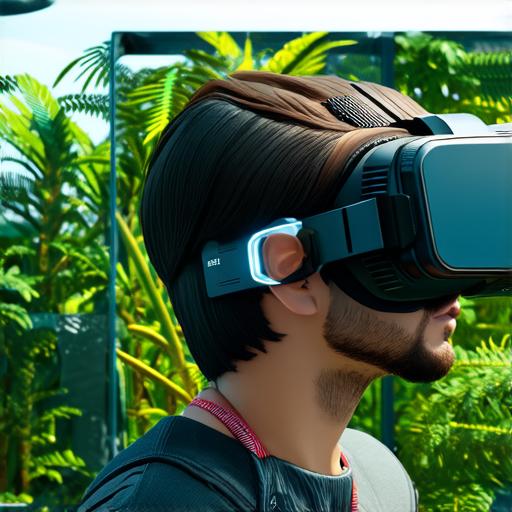Introduction
Virtual reality (VR) is a rapidly growing technology that has the potential to revolutionize how we experience and interact with the world. From gaming to education, healthcare, and beyond, VR offers endless possibilities for creating immersive and engaging experiences.

The Importance of User Engagement
Before we dive into specific strategies, it’s important to understand why user engagement is so crucial in VR. User engagement refers to how actively and deeply a user interacts with an experience or application.
Engaged users are more likely to return to the experience, recommend it to others, and even pay for it. Research has shown that high levels of user engagement are associated with increased satisfaction, better retention, and higher revenue.
Strategies for Enhancing User Engagement in VR
With that in mind, let’s take a look at some of the key strategies for enhancing user engagement with virtual reality experience development:
-
Create a Compelling Narrative
-
Focus on Usability and Accessibility
-
Use Real-World Examples and Visual Aids
-
Incorporate Gamification Techniques
1. Create a Compelling Narrative
One of the most effective ways to engage users is by creating a compelling narrative. This can be achieved through storytelling, interactive elements, and even gamification techniques. By giving users a clear sense of purpose and direction, you can create an immersive and engaging experience that keeps them coming back for more.
For example, the popular VR game “Beat Saber” uses music and rhythm to create a compelling narrative that keeps players engaged and motivated. Players must navigate through increasingly complex levels while matching their movements to the beat of the music, all while avoiding obstacles and enemies. The game’s immersive environment, combined with its challenging gameplay and engaging storyline, has made it one of the most successful VR games to date.
2. Focus on Usability and Accessibility
Another important factor in enhancing user engagement is usability and accessibility. Users should be able to easily navigate through the experience and understand how to interact with it. This includes providing clear instructions, intuitive controls, and easy-to-use interfaces.
For example, the VR social platform “VTime” has focused heavily on usability and accessibility in its design. The platform allows users to create and join virtual rooms where they can interact with each other in a variety of ways, including video chat, voice chat, and even playing games together. By providing a simple and intuitive interface that is easy for users to navigate, VTime has been able to attract and retain a large user base.
3. Use Real-World Examples and Visual Aids
Real-world examples and visual aids can be incredibly effective in enhancing user engagement in VR. By using familiar and relatable content, you can create a more immersive experience that resonates with users on an emotional level.
For example, the VR education platform “Discovery VR” uses real-world examples and visual aids to teach students about various subjects in an engaging and interactive way. Students can explore virtual environments that replicate real-world locations, such as museums, historical sites, and even outer space. By providing a more immersive and engaging learning experience, Discovery VR has been able to attract and retain a large user base of students.
4. Incorporate Gamification Techniques
Gamification is the use of game design elements in non-gaming contexts to engage users and motivate them to take action. In VR, gamification techniques can be particularly effective in enhancing user engagement.
